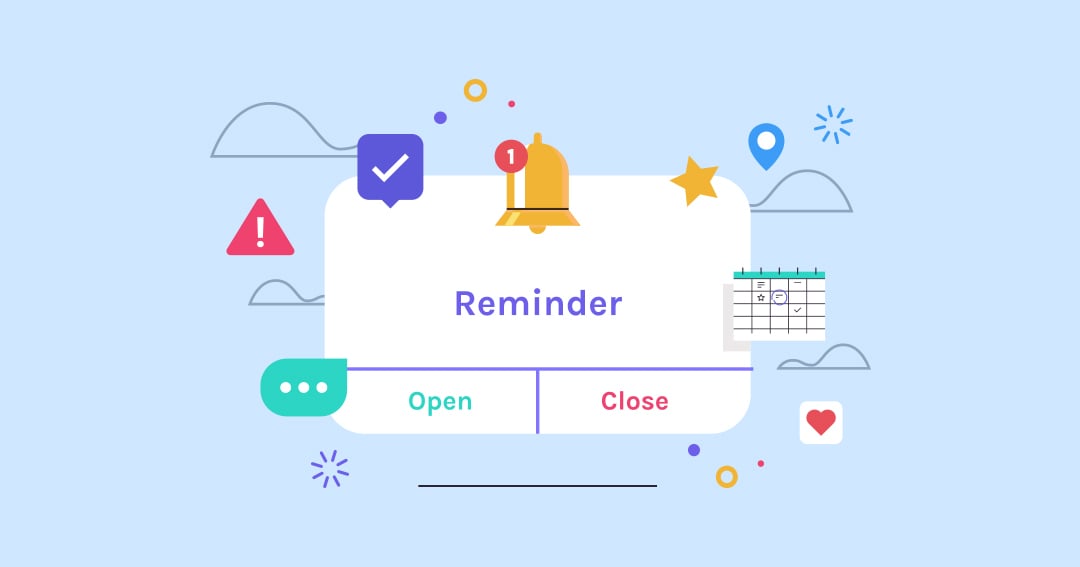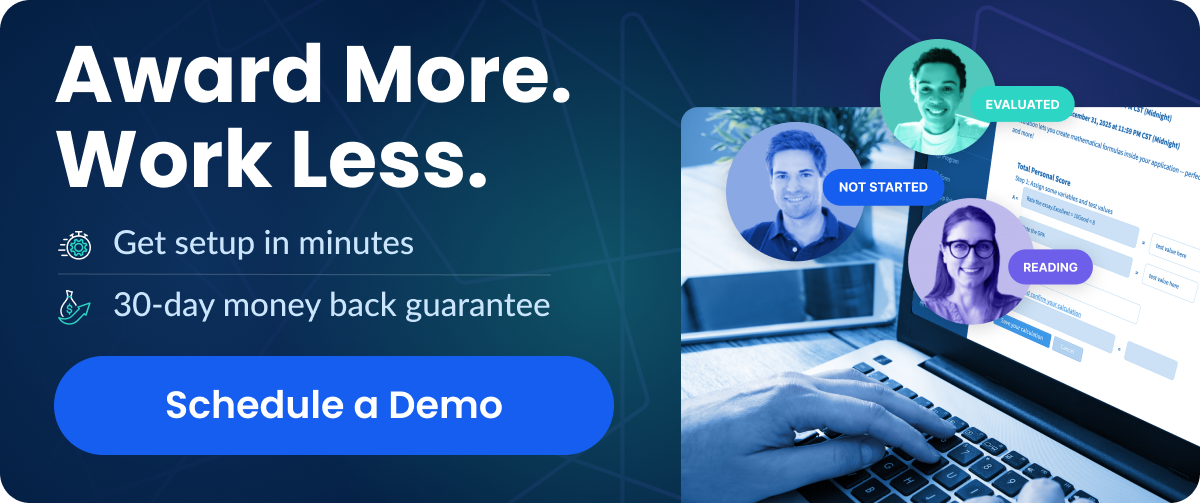Effective Communication Strategies for Scholarships
Communication strategies for scholarships may not seem like a top priority for your program, but they should be. Scholarship communication is about more than just keeping in touch with your potential candidates. It’s about maximizing opportunities for potential recipients and giving your program the best odds for success possible. Read on as we explain why communication is so critical for your scholarship program.
Know Your Audience - Connecting with the Right Students
If the goal is to first communicate the existence of your scholarship with the world, the first step in effective scholarship communication is knowing who it is you are talking to. You need to know who you’re trying to reach if you hope to attract the right candidates. So think about things like:
- Their diverse needs and interests
- Preferred communication methods
- Their age, grade level, and socioeconomic background.
Understanding these factors will help shape an outreach plan that resonates. For example, if you’re trying to reach high school students, social media ads will work better than ads in a local newspaper.
Taking the time to "know your audience" will ensure your messaging reaches and motivates the right students to apply.
Keeping Messages Simple Yet Powerful
When promoting scholarships, every word counts. Your messaging needs to quickly convey key details and motivate students to apply. Here are some simple tips you can use to craft crisp and clear content:
Focus on Relevance - Only include details directly relevant to potential applicants.
Highlight Benefits - Emphasize benefits like financial aid, academic support, community belonging, or career opportunities to give students compelling reasons to apply.
Use Active Voice - Active voice and positive language gives writing more energy and immediacy.
Consider the Reading Level - Aim for an eighth grade reading level when possible to maximize accessibility and understanding.
Limit Jargon - Avoid overused phrases and specialized terms. Stick to familiar, universally understood language.
Lead with Key Info - Start announcements with the scholarship name, deadline, eligibility criteria, and award amount.
Write Concisely - Be brief yet specific. Sentences under 15 words are ideal.
With careful editing and revising, you can craft content that clearly communicates key details in a compelling, accessible style for diverse audiences.
Cast a Wide Net - Utilizing Multiple Channels
With so many outlets for communication, determining the best channels to use can be challenging. The key is using multiple platforms to capitalize on each one's unique strengths and reach a broader, more diverse audience.
Email - Allows targeted, personalized outreach delivering comprehensive scholarship details directly to inboxes.
Websites - Scholarship websites offer a centralized hub with in-depth program information.
Social Media - Platforms like Facebook and Instagram facilitate wide sharing of short highlights ideal for driving traffic to main websites/applications.
Texting / SMS Messaging - These services enable sending deadline reminders and quick updates right to students' phones.
Print Materials - Posters, brochures and direct mailings placed where your audience already gathers expands visibility.
School Channels - Reaching students through guidance counselors, teachers, athletic coaches and other school conduits leverages existing trust.
Multimedia - Videos, virtual info sessions, and podcasts deliver dynamic, engaging content catering to diverse learning preferences.
Rather than relying on a single channel, it’s better to use a cross-channel approach to meet potential candidates where they already are online and off.
Make It Personal - Tailoring Outreach for Meaningful Connections
Generic, one-size-fits-all messaging often gets ignored. Personalizing communication makes potential scholarship candidates feel seen. Here are some ideas for personalized scholarship communication:
- Segment contacts into groups by location, age, interests etc.
- When possible, incorporate first names into subject lines and greetings.
- Relate scholarship opportunities to specific student needs and goals aligned with the award criteria.
- Use inclusive language and imagery reflecting diverse demographics - ethnicity, gender, age, ability status - to convey a welcoming culture.
- Share student testimonials and donor stories that applicants can relate to on a human level.
- Encourage questions and feedback with language emphasizing your willingness to help.
- Send individual messages congratulating semi-finalists or announcing results to all applicants.
While personalized communication requires more time and strategic coordination, it yields big returns through increased connection and engagement.
Pro Tip: Use personalization when communicating with your donors too!
Keep Applicants in the Loop with Timely Updates and Reminders
The scholarship journey extends far beyond the initial announcement that you’re seeking applicants. Sending regular updates and reminders shows you’re invested in applicants’ success.
It’s a good idea to do things like:
- Provide relevant updates on deadlines, document requirements, selection status, or changes to programming.
- Keep websites and social media current.
- Send reminders a month, two weeks, and one week ahead of deadlines.
- Keep reminders short and sweet.
- Leverage email marketing tools and texting services to automate correspondence.
- Communicate urgency when necessary.
- When possible, follow up on missing application items with personalized emails or calls.
Being proactive with your applicants can help ensure a large pool of qualified candidates. Ongoing communication provides vital support for navigating the scholarship process successfully as well.
Always Provide Clear Instructions
The application process can be daunting if requirements aren’t communicated clearly. Make sure students understand what to do.
Break It Down - Divide instructions into numbered steps. Use concise subheadings, bulleted lists, and ample white space.
Specify Details - Leave no question unanswered. Give due dates, document formats, length requirements, etc.
Ensure Accessibility - Use plain language easily understood by non-native speakers and those with low reading levels.
Offer Examples - Include screenshots or samples of completed applications, essays, and other required components where relevant to clarify expectations.
Emphasize Key Points - Call out the most critical requirements applicants need to know upfront in bold text or text boxes.
Make Help Available - Provide contact info for questions and technical assistance. Consider chatbots or FAQ pages to address common concerns.
Follow Up - Send confirmation emails when items are received with next steps. Proactively check in with applicants prior to deadlines.
With clear, comprehensive instructions and resources supporting each step, you set applicants up for stress-free scholarship experiences. Remove guesswork and anxiety around requirements through proactive communication and guidance.
Offering Feedback and Support
No matter how detailed your instructions, applicants will have questions. We highly recommend creating a contact form, listing contact information and office hours, and creating FAQ pages. Consider hiring additional support staff to help during your program’s period in order to answer emails and inquiries within 24 hours-48 hours.
Simply by encouraging questions and dedicating resources to timely, thorough responses, you provide vital support. Applicants feel comfortable seeking help needed to successfully navigate the process. Make yourself accessible and approachable at every stage.
Lift the Veil - Cultivating Transparency
The scholarship selection process can feel mysterious to applicants if administrators aren’t proactive about transparency. Demystify your program by:
- Detailing scoring rubrics and decision criteria. Quantify GPA cutoffs, essay scoring, etc.
- Explaining the selection process. How are applications evaluated?
- Introducing selection committee members on your website to give the process a human face.
- Sharing past recipient testimonials and stats conveying the diversity of recipients.
- Communicating results openly and promptly.
- Providing constructive feedback if requested.
- Surveying applicants post-selection for anonymous input to enhance transparency.
Being open about your program’s processes and decision factors reassures applicants they are evaluated equitably by real people who want them to succeed.
Communication is Key to Scholarship Success
Thoughtful, strategic scholarship communication requires effort, but pays dividends by:
- Boosting applicant satisfaction
- Streamlining administration, and
- Furthering your scholarship program’s impact.
Your next step is to put our recommended communication strategies for scholarships into practice! Start where you can by focusing on the strategies that are most relevant to your program. Strengthening communication channels and style presents a rewarding way to immediately improve outcomes and advance your scholarship’s mission.
And, if you want assistance with automating your scholarship program’s correspondence, SmarterSelect can help. Click here to schedule a demo, and see for yourself all the ways our software streamlines the scholarship management process.



